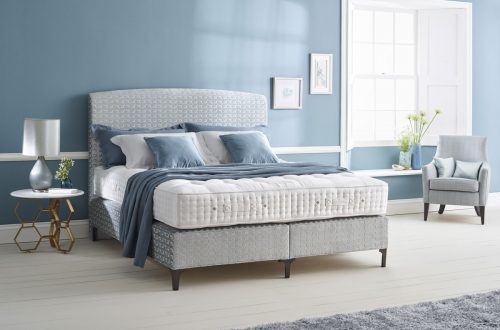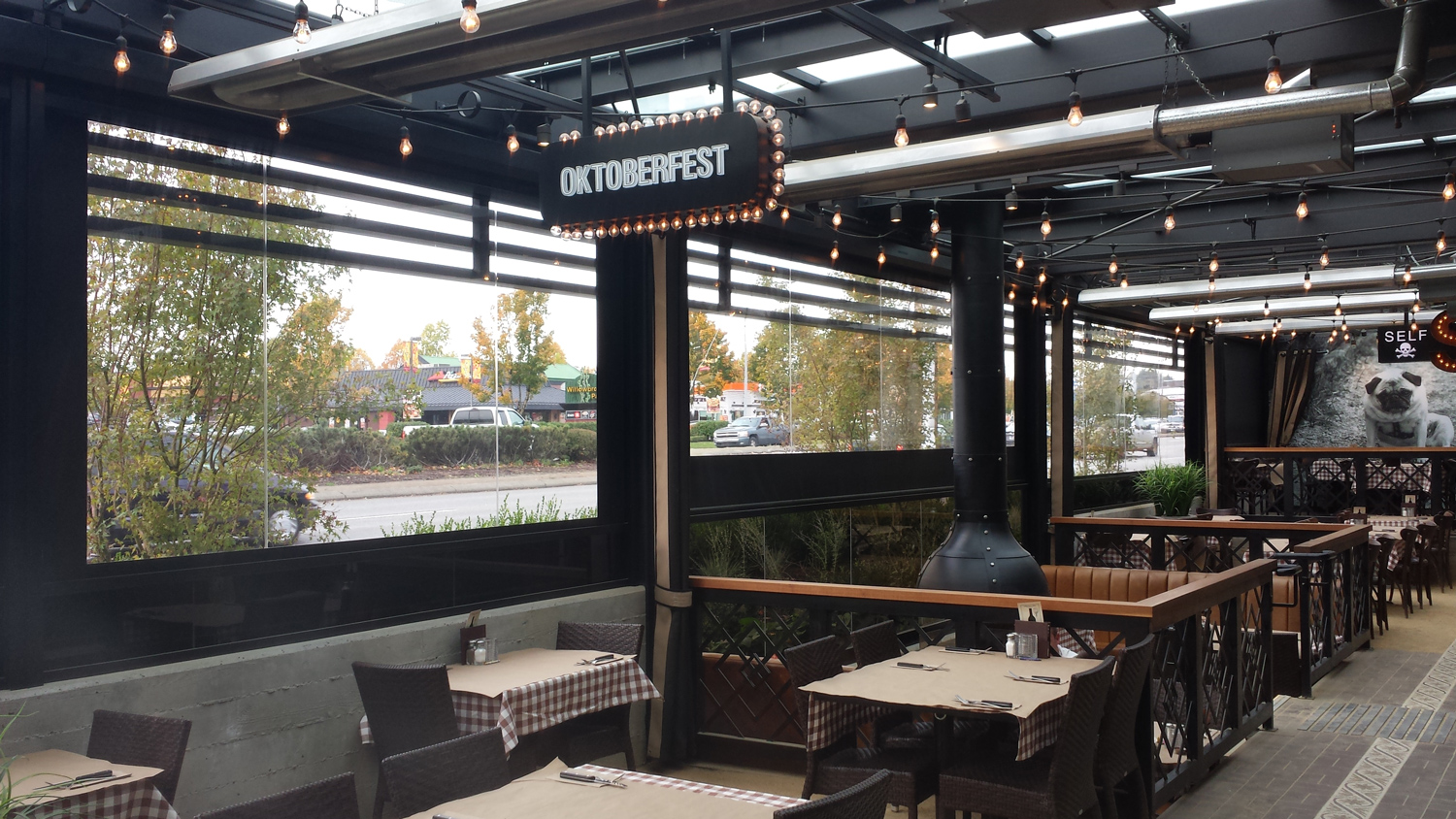As a collective of fresh water that houses more than 20 percent of North America’s freshwater volume, the Great Lakes hold a unique status among American waterways. They require special consideration and treatment, especially in the face of climate change’s adverse effects. While the Great Lakes have a long, natural history of water level fluctuation, recent levels signal a decidedly more extreme phase in the pattern. The past few years have seen some of the lakes’ highest recorded water levels, which can cause destruction from flooding and erosion to damaged shoreline homes and infrastructure across the Great Lakes Basin’s approximately 14,000 miles of shoreline.
Headquartered in Detroit but operating across the United States in places like Chicago and Milwaukee, SmithGroup has positioned itself as a vital negotiator of Great Lakes shoreline design, engineering, and positioning. The multi-disciplinary architecture firm has utilized its expertise to inform waterfront habitats through its projects in coastal engineering and urban design and planning typologies, such as in the Blue Heron Lagoon Habitat restoration project in Detroit, Chicago’s South Lakefront Framework plan, and the Concordia University Wisconsin Lakeshore project, among many others. Throughout the course of its practice in these areas, the firm has developed ideologies for what it terms Blue-Green Infrastructure, or the essential points where land, water, and manmade infrastructure meet.
“Some people refer to green infrastructure as open parks and the landscape fabric that connects neighborhoods and communities together, and when you think about it in the blue/green context, you’re thinking about how you’re giving people access to the waterfront and also giving people the sense that the water is a critical resource not only from a recreational standpoint, but also an environmental standpoint that needs to be protected,” said Bob Doyle, PLA, principal, landscape architect at SmithGroup.
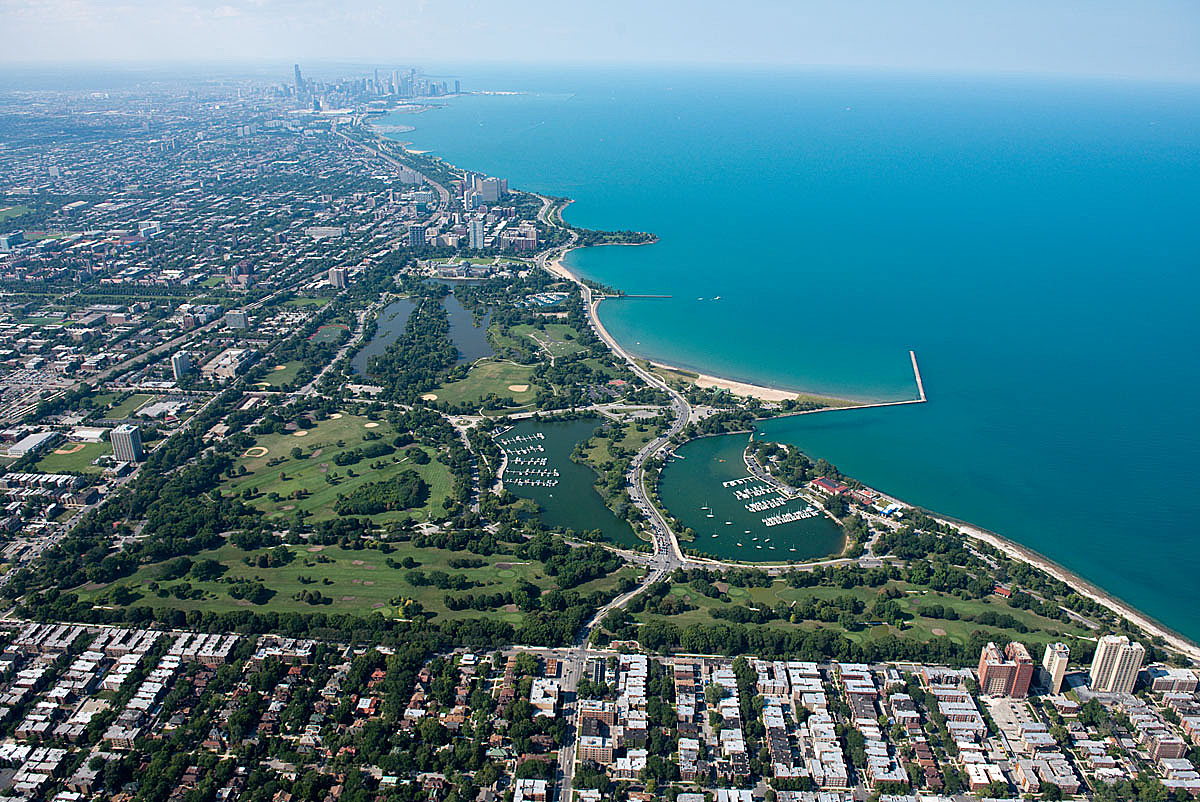
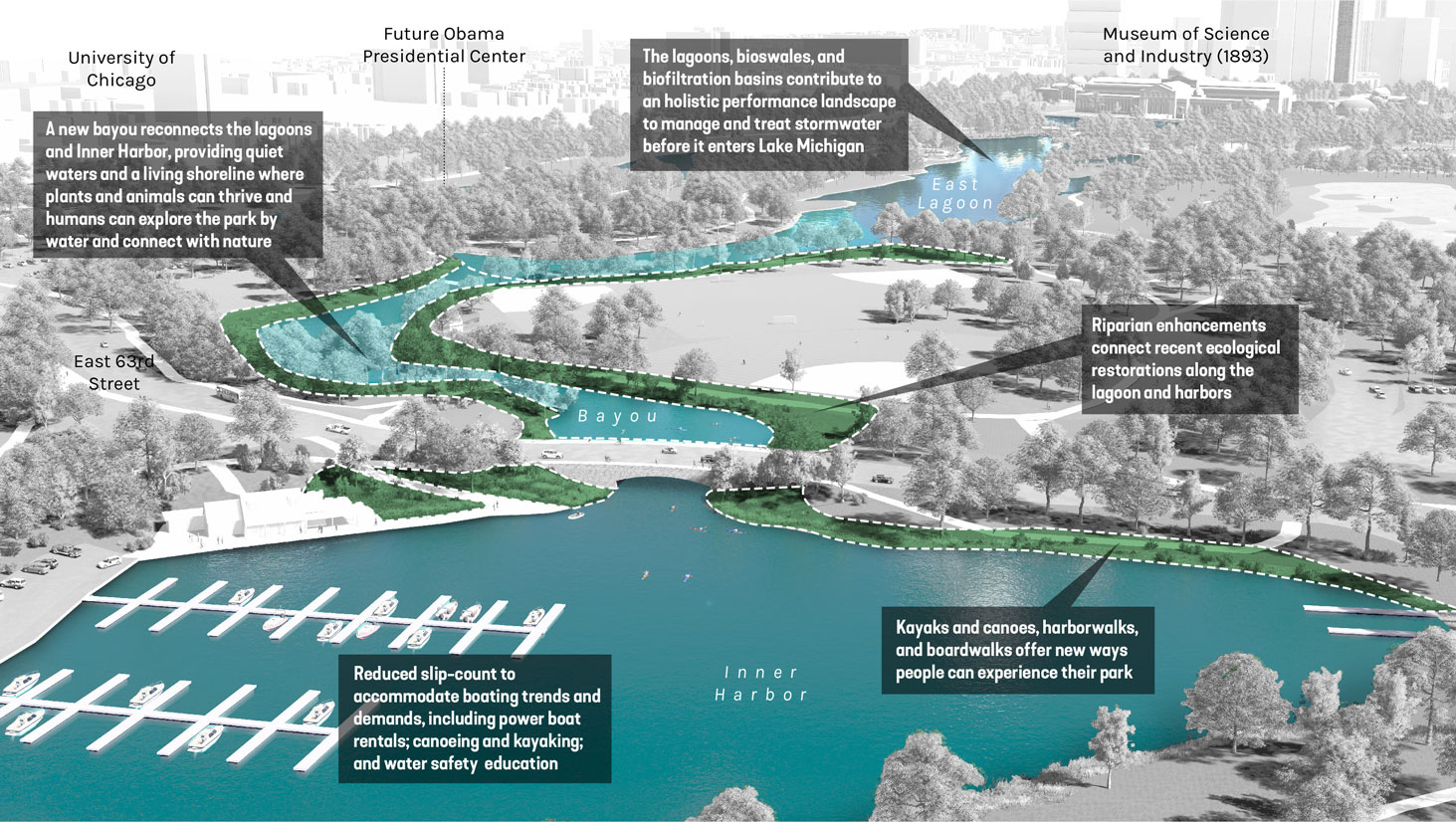
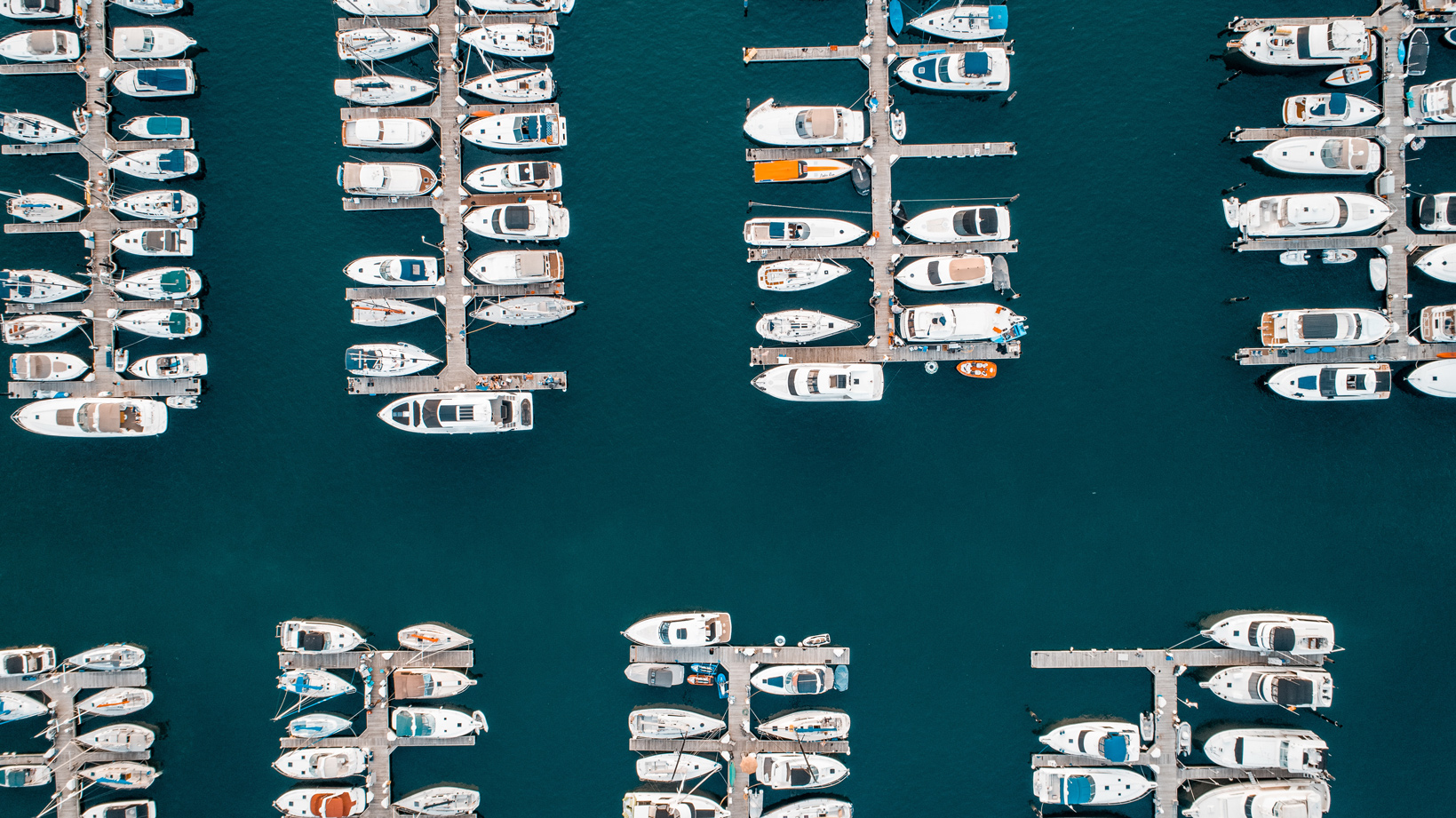
For SmithGroup’s Waterfront Practice Director, Jason Stangland, PLA, LEED AP, the term also encapsulates green practices for ensuring the resiliency of water climates for both their ecologies and their users.
“This overlap of blue and green is a relationship between—in my mind—how we think about our water from an economic standpoint and how we respect it from the green side. That’s my take: it’s not just about an ecology, but about economics as well,” Stangland said.
Stangland’s and Doyle’s contributions to successful green/blue infrastructure at SmithGroup are significant and touch several points across the Great Lakes region’s several waterways and major waterfront cities of the Midwest, such as Chicago, Milwaukee, Detroit, and Traverse City, which is a well-traveled bay-side city in northern Michigan known for its fruity-harvest heavy ecology and winemaking.
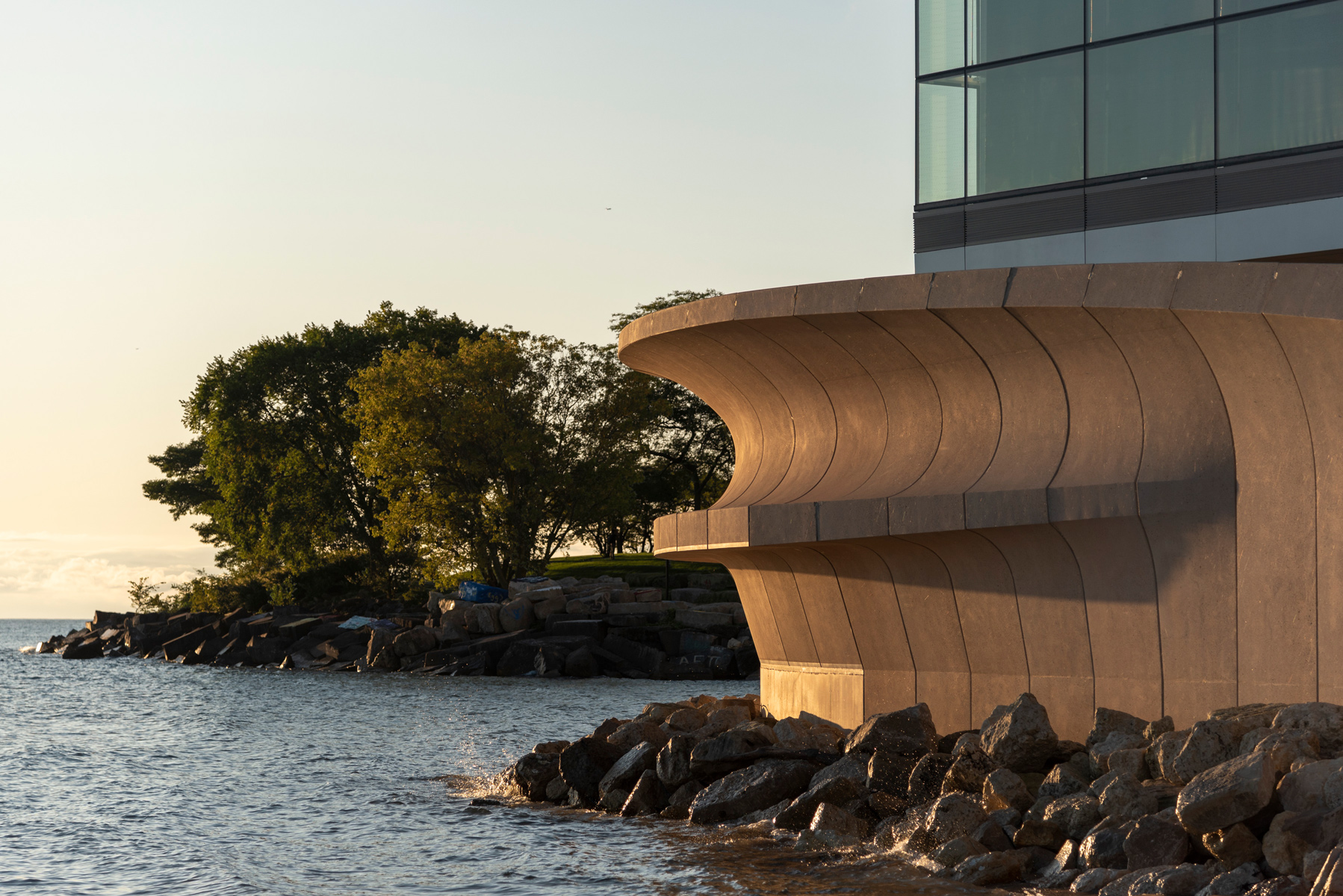
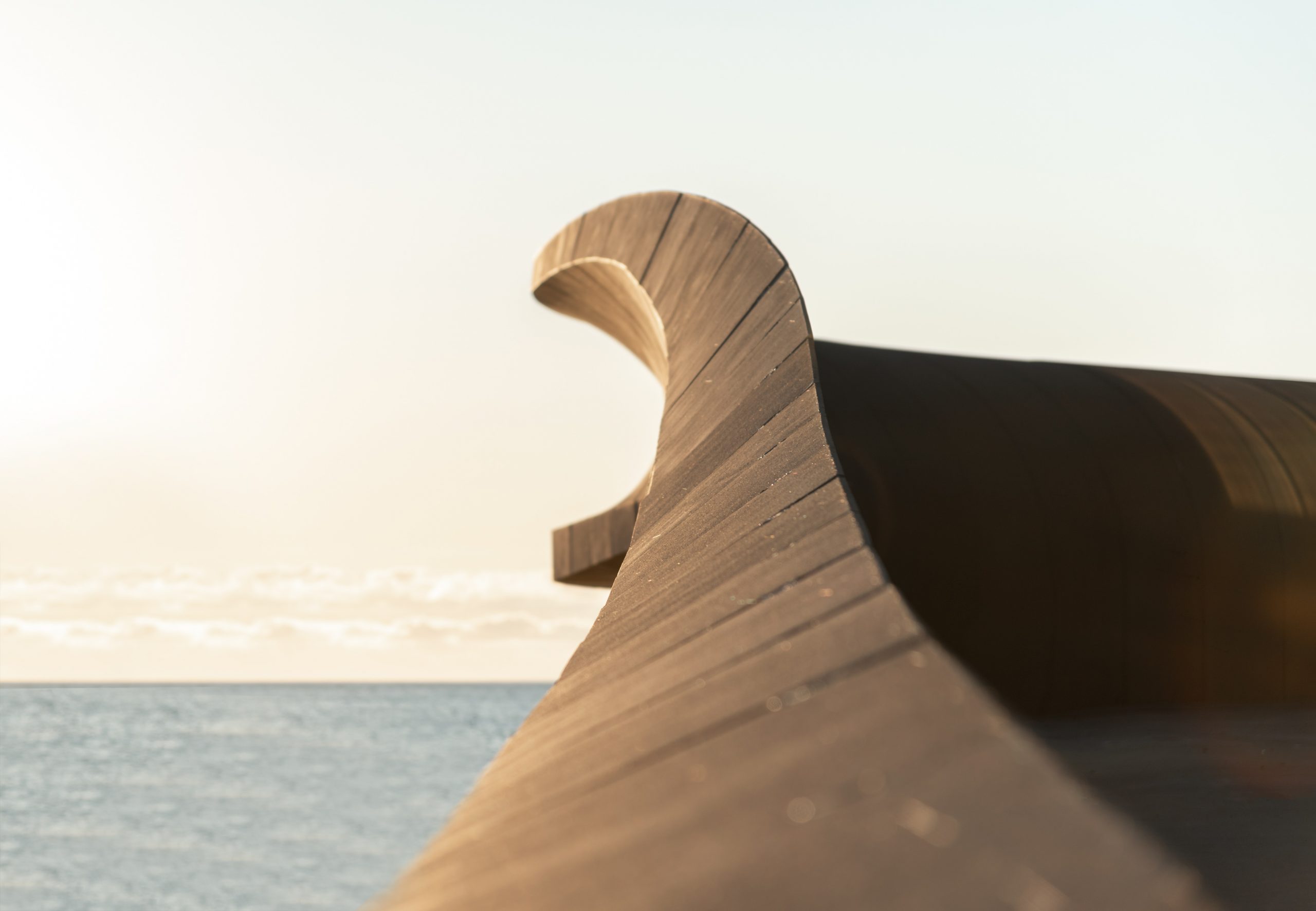
In this region—which holds two Lake Michigan bays and approximately 10 waterfront parks—Doyle is currently advising on a study and positioning by the Traverse City Downtown Development Authority of the Lower Boardman River, a roughly 28-mile river connecting the west bay with an inland lake called Boardman Lake, and effectively bisecting the city’s downtown by 1.6 miles of river. As a coastal city with inland waterways so present in its economic core, Traverse City also stands to be affected by the dramatic shifts in water levels and their effects on built infrastructure like sewer systems and, of course, natural infrastructure like the riverbank. With dramatic shifts in water levels and general environmental change, the profession of urban, waterfront, and landscape designer has swung in tandem.
“When I first started in the profession, waterfront projects were primarily about protection of assets and recreational access to the waterfront and what we’ve seen over the last 30 years is adding to that more layers,” Doyle posited.
Stangland also noted an increased awareness in environmental ethics from both designers and design users. Now more than ever people are rewarding creative solutions to environmental problems, and this has positioned SmithGroup as an educational partner in the profession as much as a design firm.
“People are much more aware of what we’re doing to our lakes and how improvements relate to the lakes, so a conventional solution to a problem that fails to achieve a few benefits is something that I believe people generally don’t see a lot of value in,” Stangland said. “They’re more interested in solutions that achieve a variety of goals whether that’s achieving shore protection while you’re creating environmental enhancements and public access, for example.”
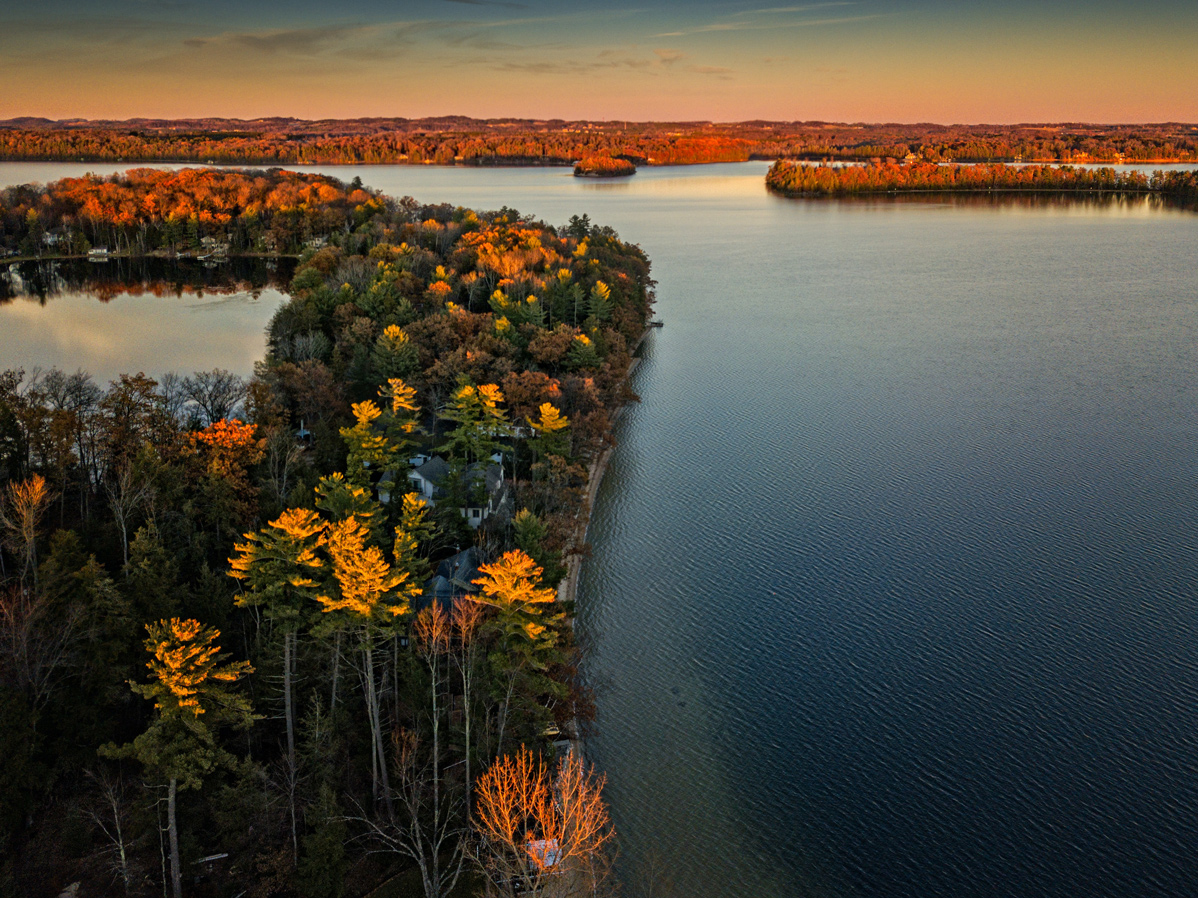
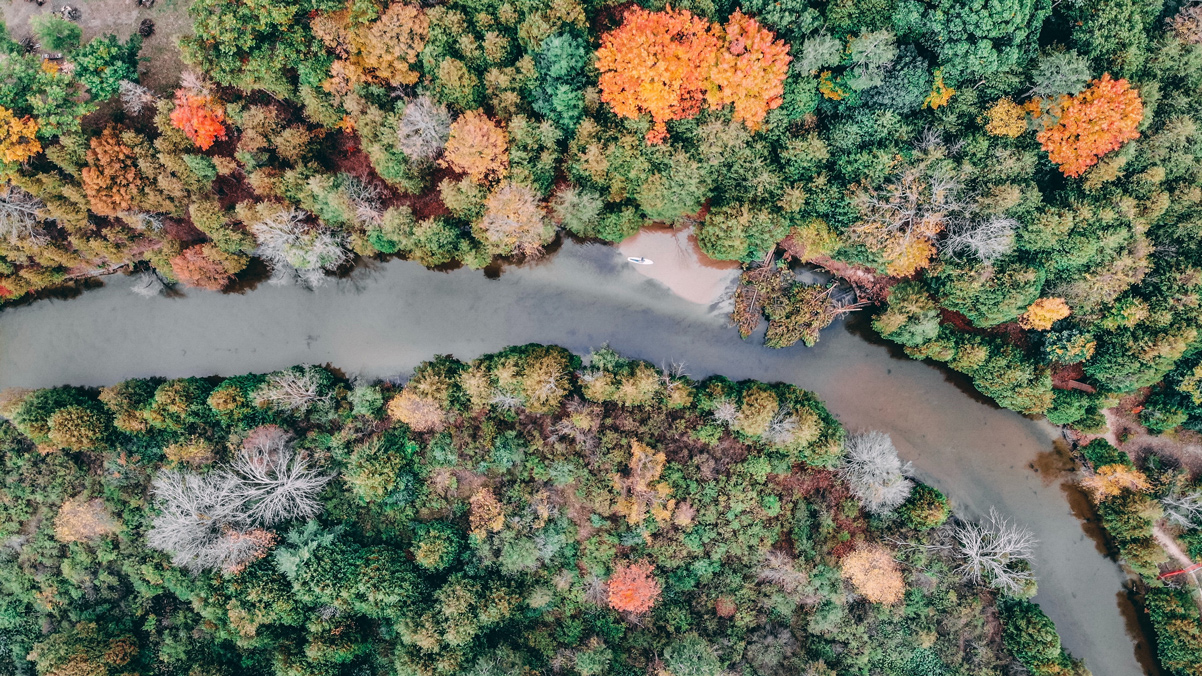
The same favor for multi-layered, blue/green infrastructure solutions underscores the Lower Boardman River Unified Plan in Traverse City. To Doyle, people are viewing the water as part of a holistic system and the river as a living being that must be protected. Originally called the Ottawa River, it was utilized by Indigenous people for hundreds of years before being converted by European settlers to move cut timber, a repurposing that was vital for colonial economic growth, but which devastated the aquatic habitat. While it would be an impractical task to try to erase hundreds of years of effects on the river, the goal now is to acknowledge the destruction that colonial industry has posed, and best position the waterways we have used as healthy, protected, and enjoyed resources for the future, by modern standards.
As such, the Boardman River plan is structured as a multi-faceted program that unifies a vision for the river through three parts: access and recreation; community policy like zoning and master planning; and the best practices for common problems like draining parking lots, protecting eroding banks, and creating habitat. After six months, the team had come up with 16 values relative to the river that were used as a guide for decision making. It is unified efforts like these on behalf of natural systems that will become even more essential when endeavoring into an unsure future with a changing climate and its effects.
“When I think about it, the optimism is in the growing awareness of the interconnectedness of these issues and the partnerships we’re starting to see be created through these projects,” Stangland said. “It’s the acknowledgement that winds, waves, ice, and all these various forces don’t operate on an individual parcel-by-parcel basis; so, a lot of our work is based on thinking bigger and understanding that the incremental response doesn’t achieve what it could.”
For Doyle, there is excitement in getting into the mix and providing answers gained by years of experience, and not knowing others quite yet.
“I love that things are going to continue to evolve and the things that we consider best practices today in 30 years will hopefully be antiquated and replaced by better ideas,” Doyle said. “I think that’s a natural part of how our professions evolve and to me that’s exciting; I love being engaged with people and new ideas and thinking of how to balance all our needs to come up with the right answer.”
Text: R. Collins
Photography: SmithGroup, Brian Beckwith, Dennis Buchner, Jake Grella





